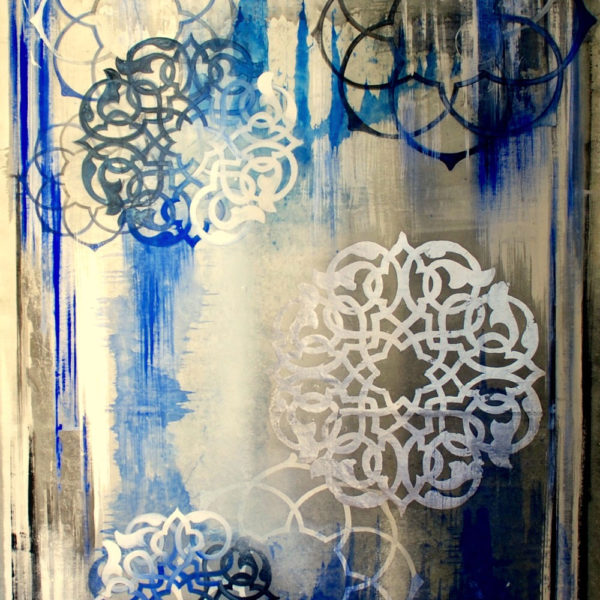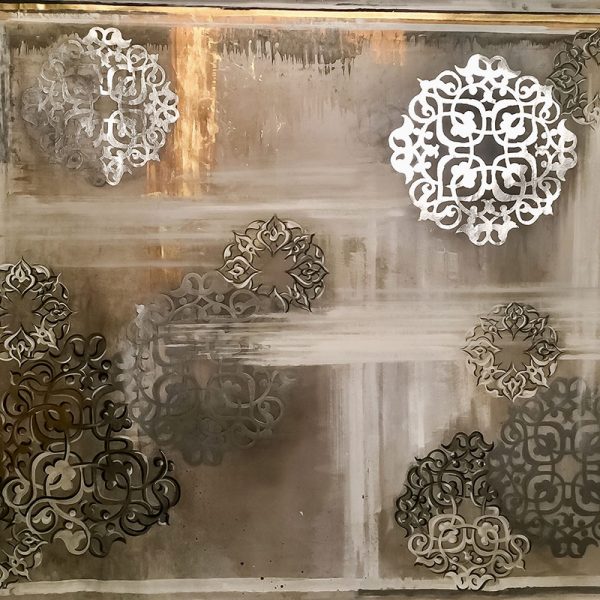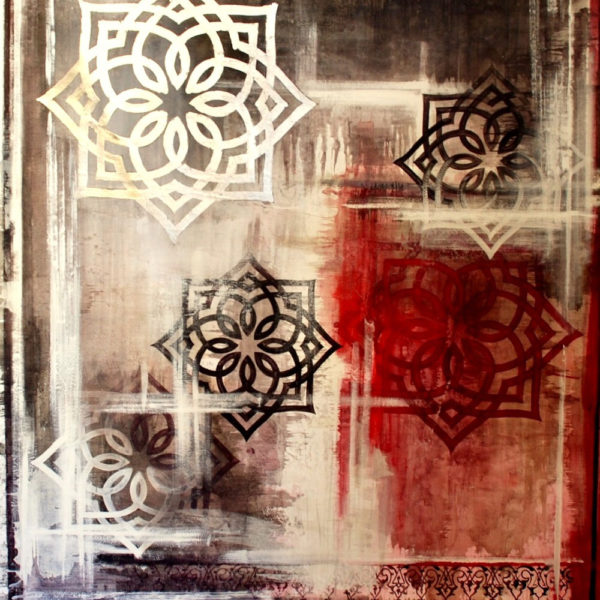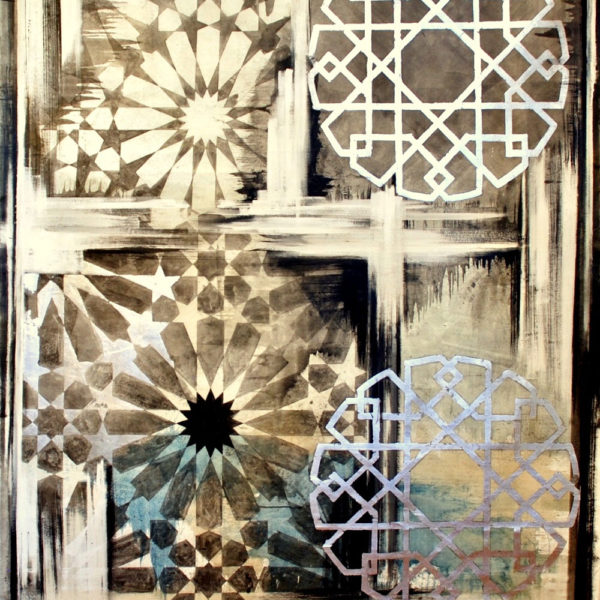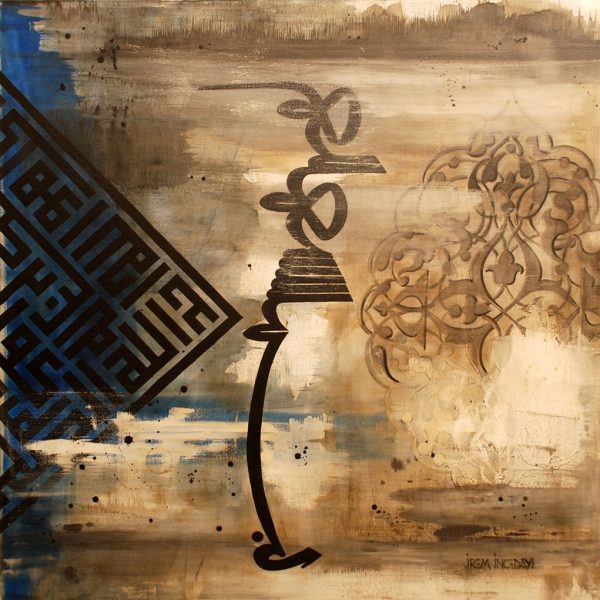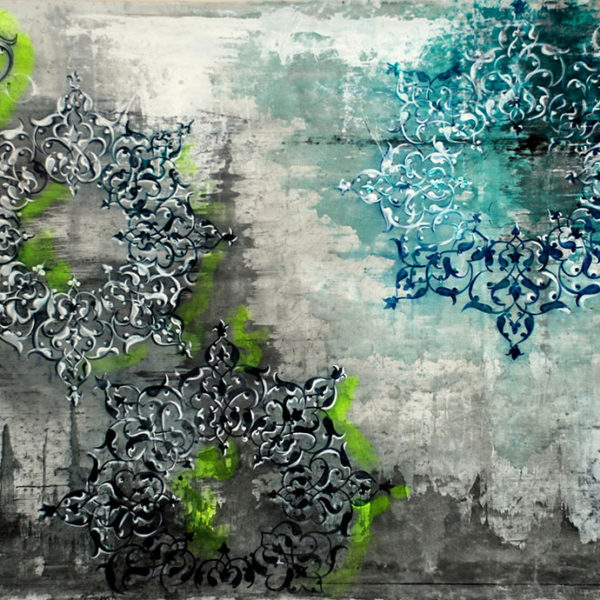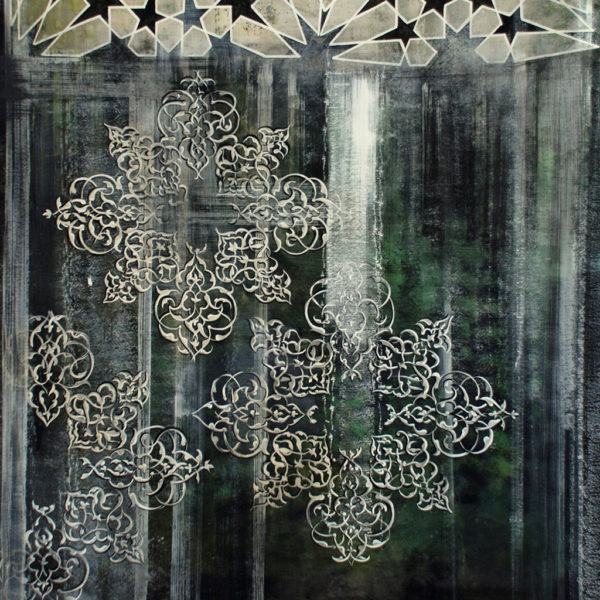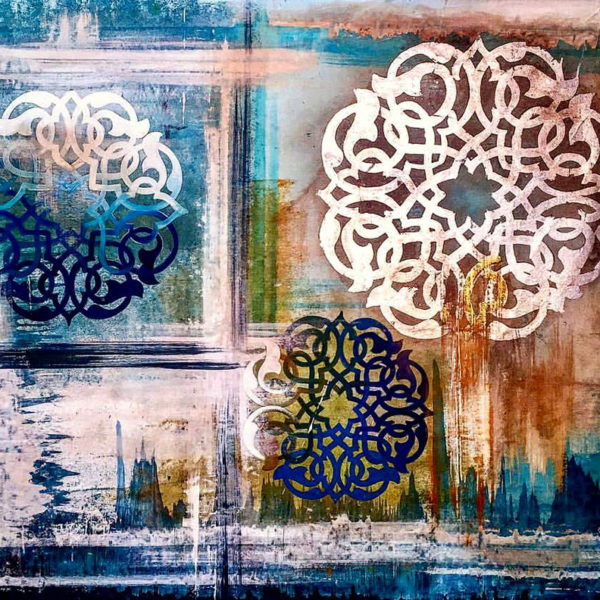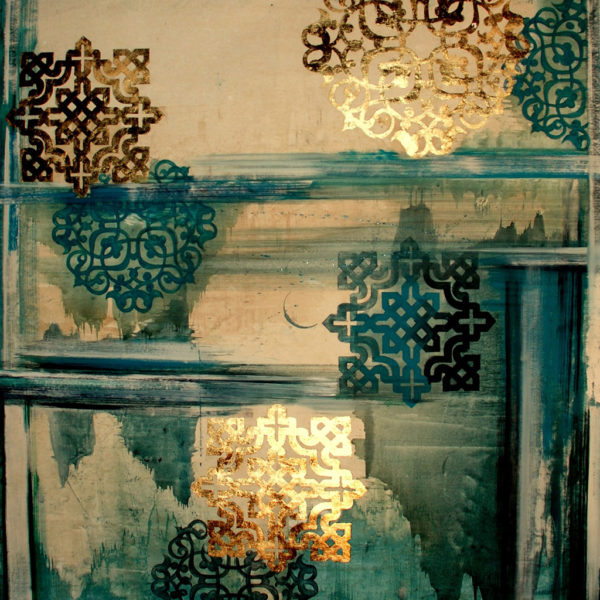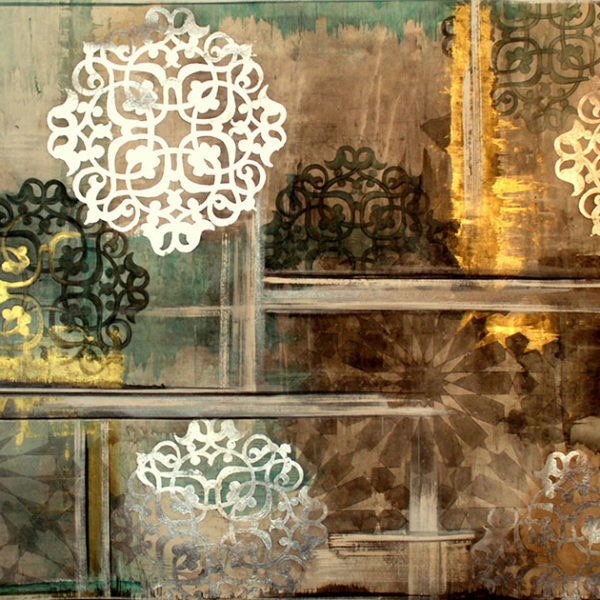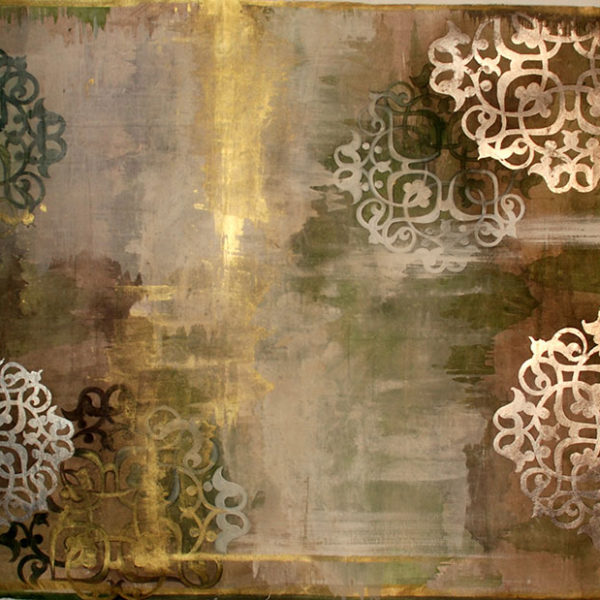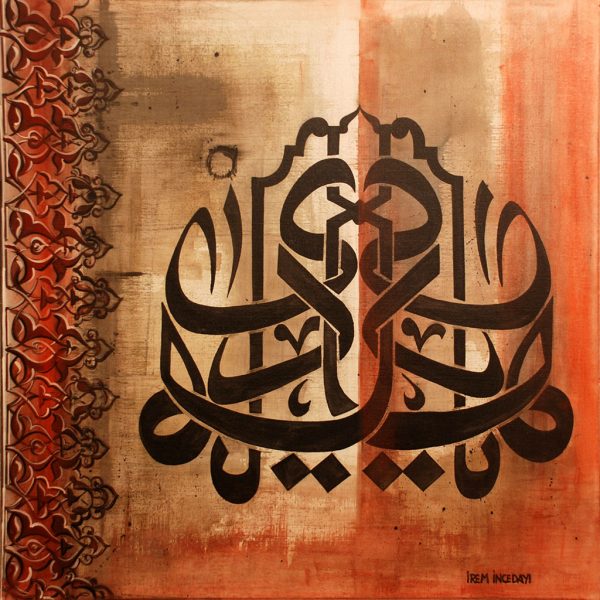An ancient past of splendor emerges from the paintings of Irem. The gold and the purple, the refined silks with the changing colors, have crossed the Bosphorus and have reached us along an imaginary silk road.
The drawings on the canvas are reminiscent of the plasterwork of the Byzantium palaces; they are signs that wind up as supple and refined as an Ottoman calligraphy. Irem’s language is mainly made up of signs: they are wandering signs, now on the surface, now submerged and invisible, which take on deceptive forms around which the uncertain light of the twilight and changing of dawn vibrate.
Sometimes these forms weigh like immense marble blocks but they are deceptive forms that quickly flow into the signs that follow one another impenetrable and unattainable. A dense, mysterious, intricate and inextricable plot: a labyrinth, but also an ancient “tapestry” that reflects itself in a play of reflections. Archetype of tapestry that “detached” from the ancient palaces of Ephesus, Pompeii, Byzantium, Rome flows back from the memory and appears woven together with powerful baroque limbs: “shadows of a memory”

